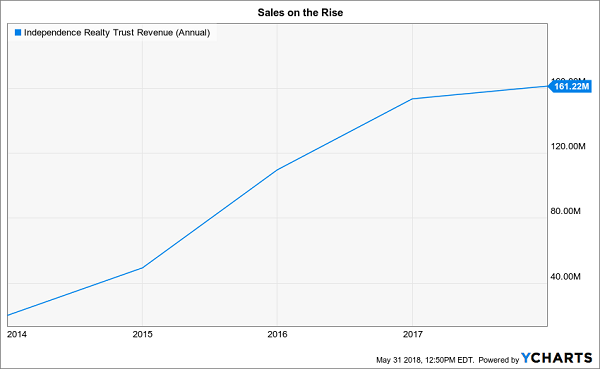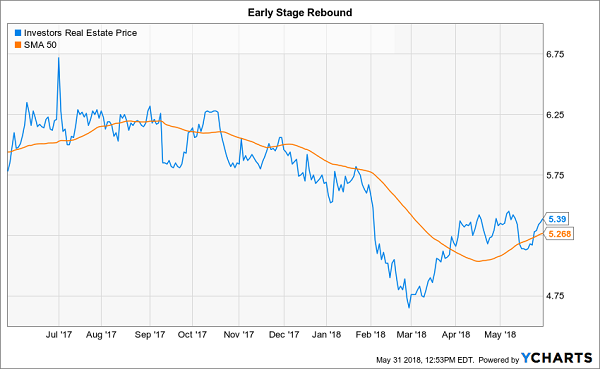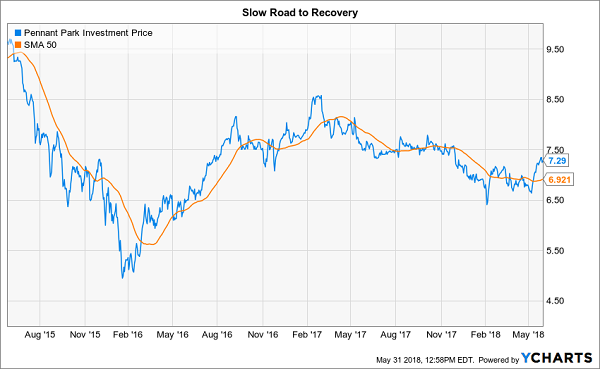When investors look for dividends, they usually think about blue-chip names that are just as common on Main Street as they are on Wall Street. However, there are a large number of single-digit stocks flying under the market’s radar that also offer attractive yields.
Individual investors tend to gravitate toward stocks trading under $10 for multiple reasons. For one, it can psychologically feel more powerful to buy 100 shares of a company trading for $7 than just seven shares of a $100 name.
While both investments are just as likely to generate attractive returns over time, low-dollar stocks have historically proven to be more volatile. In other words, they can offer active traders more bang for their buck in the short term.
Volatility works both ways, which is why I’ve sifted through the stocks that appear to be trading under $10 for a reason and might not be able to sustain their current dividends. That said, here are three high-yield names under $10 that appear to have attractive upside potential.
Independence Realty Trust (IRT) is an apartment real estate investment trust (REIT) that focuses on secondary Midwest and Southern U.S. markets, such as Austin, Indianapolis, Lexington, Oklahoma City and Raleigh/Durham. Away from the major coastal cities, the company is growing in niche markets with positive population and employment trends, sporting a 94.4% occupancy rate across its properties.

Management is targeting 3% to 4% “same-store” revenue and net operating income growth in 2018. Independence generated core funds from operations (FFO) of $0.18 a share in the first quarter, which is equal to its dividend payout (7.3% yield). Prior to this year, management paid a monthly dividend of $0.06.
Acquisitions are key to augmenting the company’s core growth, including the purchase of nine communities last September. Independence Realty targets assets that are five to 15 years old, where management believes it can raise rents and occupancy by renovating to offer increased amenities and repositioning the marketing message. In the meantime, the company has a stable balance sheet; 96% of its borrowing is at fixed rates and Independence Realty has no material debt coming due until 2021.
Investors Real Estate Trust (IRET) also operates apartment buildings, having divested of its healthcare portfolio in recent quarters. Along the way, the company has increased its geographic footprint from the Dakotas and Minnesota to include Denver, Colorado.
The change has been driven by chief executive officer, Mark Decker, Jr., who took over the reins in April 2017. With each successive quarter, Decker and his team have been able to rebuild investor trust that was hurt by a dividend cut two years ago to $0.07 a share (5.2% yield).

Investors Real Estate had core FFO of $0.09 a share in its fiscal third quarter, which ended in January. Both revenue and net operating income increased by 5% year-over-year and management is using the funds from the healthcare asset sales to pay down debt.
It’s also encouraging to see both corporate share buyback activity and company insiders buying the stock with their own money. There are several reasons why management may sell stock in their own firm, but the only clear reason to buy is if they believe the price is headed higher.
Pennant Park (PNNT) is a business development corporation (BDC) that hasn’t always been on Santa’s “nice” list. In fact, Brett Owens flagged the company back in 2016, just a few months ahead of a dividend cut. However, this is 2018, management is turning the business around and Pennant appears to have performed its penance for prior mistakes.

The company earned $0.19 a share in the first quarter, which was a penny ahead of the consensus analyst estimate and enough to cover its quarterly dividend of $0.18 (9.9% yield). In recent quarters, management has cut management and incentive fees and also shifted the investment portfolio by selling equity investments in favor of income-producing securities. 87% of Pennant’s debt portfolio is variable rate, which sets it up to benefit from an eventual increase in interest rates.
The company’s increased liquidity position also led management to announce a $30 million stock buyback program in May. This strategy should add to earnings per share, if the repurchases occur below Pennant’s net asset value of $9 a share.
My previous experience is that under-the-radar dividend stocks under $10 can be risky, but lucrative investments.
If, however, you’re nearing retirement, or have already retired and are living off income from your investments, I strongly encourage you to check out the top 7 REITs from Brett Owens, Contrarian Outlook’s Chief Investment Strategist. All seven are key recommendations in his 8% No Withdrawal Portfolio and check both boxes for “dividend growth” and “high current yield”.
As a group, they pay an impressive 8.5% average yield today, which is downright outstanding in a 3% world.
Combine 5% to 10%+ dividend growth with these high-single-digit current yields, and we have a formula for safe 15% to 20%+ annual gains from REITs, with a significant portion of that coming as cash dividends.
And thanks to the new tax plan, there’s never been a better time to buy REITs and live off their dividends.
(REIT investors will benefit from the tax breaks that “pass through” businesses will receive in the new code. Investors will be allowed deduct 20% of their REIT dividend income, which means the 37% tax bill will drop to 29.6%.)
But it’s important to choose your REITs wisely.
Don’t buy a low-yielding static payer. Don’t buy a retail REIT, either (with that entire industry in a death spiral, future rent checks will be dicey for years to come).
Instead, focus on recession-proof firms, such as those that rent hospitals, business lodging and warehouses filled with Amazon packages. Landlords that own properties that will be in high demand no matter what happens to interest rates or the economy from here, in other words.
We’d love to share Brett’s seven favorite recession-and-rate-proof REITs with you – including specific stock names, tickers and buy prices. Click here and I’ll send my full 8% No Withdrawal Portfolio research you to right now.
